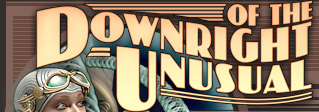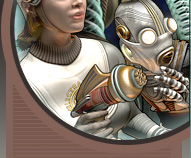Thrilling Tales of the Downright Unusual is a series of lightly interactive stories written and illustrated by Bradley W. Schenck. The stories can be read in their entirety here on the Thrilling Tales web site - but you can also buy your very own copies as books.
So... let's review, shall we?
There are now two different kinds of stories here. The first are interactive, branching stories, and we'll begin by looking at those. The second kind are non-interactive, serial stories. The two have a lot in common. The different features of the linear stories will be described below.
|
In Figure 1 (on your right) we see the layout of a page while we're reading a story. The circled marks (A-E) correspond to the notes below. A: marks the illustration for this page of the story. If you click on the picture a larger version of the illustration will be displayed (see Figure 2, below right). B: marks the save/restore/restart panel in the right hand sidebar. This is context sensitive: if you have no saved bookmarks, then the "Restore Place" button is disabled; and if you're not reading a story the "Save Place" and "Return to Start" buttons are disabled. C: marks the spot where a "You are following..." picture's displayed. This shows you which of the story's characters you've currently chosen to follow. D: marks the menu of choices you have for the next page of the story. There are usually between one and three options in this panel, which is labelled "Next". E: marks the menu of Downright Unusual Objects. These are items that the current character is carrying. In the course of the story objects may be picked up and put down, destroyed, or given away. |
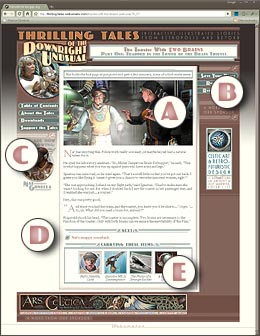
Figure 1: The Story Page 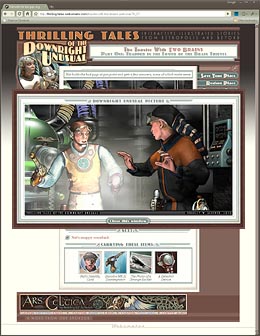 Figure 2: The illustration, enlarged (A) 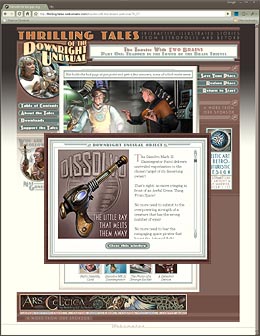 Figure 3: More information about an object (E) |
|
About the Serialized Stories  Figure 4: The lower part of a linear story page The serialized, non-interactive stories (like The Lair of the Clockwork Book) look a lot like the interactives until you reach the bottom of the page. You can still click on an illustration to see it enlarged, and the Save, Restore, and Return to Start buttons work just the same way as they do in the interactives. Then at the very bottom of the page there's a link to display or hide the Reader Comments panel. If you Show the comments panel you can add your own comment on the page or read the comments that others have left. If you Hide it again, it'll collapse out of your way. You can read through an entire story without ever unhiding the comments, if you like: they stay collapsed unless you want them. | |
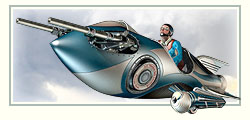
For news - including news about the Thrilling Tales - you can drop in at my Webomator Blog.
Thrilling Tales of the Downright Unusual is a lot like an idea I had back in 1996 when I was first experimenting with web design: a site full of illustrated stories, written so that you could choose one character or another, and then make choices as they move through the tale.
Neither I nor my tools were up to the job yet, though, and so away it went into the Idea Closet... where it failed to fall out on me, even after my tools and I had learned enough to make it work.
I can't remember just how the idea did come up again in 2009, but once I realized that I could do it now... I just couldn't not do it now. So I did.
Maybe that's because it gave me a chance to expand the art of my world of Retropolis with stories that take place there. The fact that the stories offer some interaction is something that's interested me since I played the Infocom adventure games of the mid 1980's. So there's that.
And the project's given me a chance to combine free web content - which, incredibly, people like - with a way to promote my work for sale - which, for some reason, I like. The advertising banners you see here lead to other sites of mine where I hope I'll be able to shake all of the change out of your pockets. And if you like the Tales on the web site, I certainly hope that you'll consider buying them as books. They're nifty. They really are.
There's a scary amount of labor in creating the illustrations for these stories... months of it. Actual months. But I get to go to parts of Retropolis that I might not have seen, otherwise. And the sheer number of the illustrations also means that here or there I stumble onto something that I find I want to rework at a higher resolution, for posters and prints, or reuse in some other way.
I really like doing this and I'm hoping that enough of you will like it well enough that you'll buy a little bit to take home. So I can keep on doing it.
So. Short answer: "Because". Long answer: Oh. Well, you just finished that bit.
Bradley W. Schenck
April, 2010

